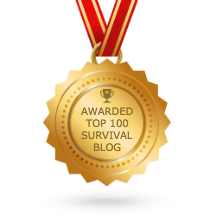This would be a great way to teach your kids about edible wild plants. Make a day of it , or a weekend by going camping, with your kids. Go hiking and pick out what can be eaten and find out ways to use the stuff that you get. Have your kids figure out how many ways they can use the berries that they just picked. What mushrooms are safe to eat. and more. This would make a great homeschooling activity.
***Please ask first if it is in someone's yard that you see something that could be foraged.***
Weeds are nutritionally superior to our domesticated crops and better acclimated to growing conditions, making them hardy and resilient. Our ancestors all over the world revered these plants for food and medicinal properties. Here are several edible wild plants-herbs-that you should learn how to identify so you can add these nutrient-dense foods to your diet. Be sure to use a field guide for plant identification.
Dandelion (Taraxacum spp.)-high in iron, beta-carotene and potassium. The blossoms can be made into a wine or fritters. Dandelion roots, made into a tea or added to soups, relieve acne, eczema and water retention by strengthening the liver.
Lamb's-quarters (Chenopodium album)-rich in iron, calcium, beta-carotene and vitamin C. Throughout history, lamb's-quarters were used as a nourishing food during times of famine and war. It is more nutritious than spinach and requires no care in the garden. It is also called goosefoot, because of the shape of the leaves. Can be eaten raw or cooked. The tea can relieve sunburns and headaches.
Nettles (Urtica dioica)-high in iron, beta-carotene and vitamin C. Because of the stinging hairs on nettles, they should be cooked. Use them in soups and as steamed greens. Nettles are excellent for skin, hair and nails.
Chicory (Cichorium intybus)-Chicory flowers are used to garnish salads, main dishes and cakes. Young leaves are picked before the plant flowers and added to salads. The root is sautéed as a vegetable or it is dried, roasted and brewed as a coffee. Make a poultice of the leaves for inflamed skin.
Chickweed (Stellaria media)-high in vitamin C. Traditionally, chickweed was given to frail people to strengthen them. Add the leaves, flowers and stems to soups, salads and stir-fry dishes. Chickweed is also made into a salve for skin disorders for everything from diaper rash to psoriasis.
Knotweed (Polygonum aviculare, P. erectum)-high in silica. Used to strengthen the connective tissue in the lungs and as a remedy for swollen arthritic joints. Steam the young tender stems and add to stews or quiches. Add the seeds with your other grains to make gruel and breads. Always cook knotweed, eating it raw can cause intestinal discomfort.
Common Mallow (Malva neglecta)-rich in beta-carotene. The leaves are soothing and anti-inflammatory. Can be eaten raw or cooked, and is used to thicken soups. Made into a tea or syrup, it relieves sore throats, coughs and ulcers. Make a poultice from the fresh shredded leaves and water for skin rashes, burns and insect bites. Garnish your salads with the delicate pink and white flowers.
Purslane (Portulaca oleracea)-high in omega-3 fatty acids, beta-carotene, and vitamin C. Purslane strengthens your immune system, liver and heart. An excellent cooling herb, add to cold soups like gazpacho. If you are pregnant or have digestive problems, avoid purslane.
Violet (Viola spp)-rich in vitamin C. Who can resist the beautiful heart-shaped leaves of violet? Or a springtime dessert made from the crystallized purple, lavender, yellow or white flowers? Violet tea is used for bronchitis, coughs and fevers. Make violet honey and take as a remedy for heartache.
Yellow Dock (Rumex crispus)-Young leaves are high in oxalic acid which inhibits calcium absorption, so eat in moderation and cook in 2 changes of water. Grind the seeds into a nutrient-dense meal and add to breads. It is recommended to remove the astringent papery flanges from the seeds before using. Do this by rubbing the seeds between your hands. Pour them into a clean container, tilt it slightly and sweep the seeds with a playing card, keeping the chaff near the top and letting the seeds roll to the bottom. Make a poultice of the fresh leaves for skin rashes and nettle stings. The root is astringent and antiseptic and used for acne, jaundice and constipation.
Whenever harvesting your edible weeds, be sure to collect them from areas that haven't been sprayed. Allow them to grow in your garden and collect them as you harvest your plants and combine them into nutrient packed meals for your family.
Modern Day Food Foraging
Edible Wild Plants: A North American Field Guide to Over 200 Natural Foods








1 comments:
This is really an informative article. There are so many hungry people and it seems there will be many more in the near future.
http://www.collapsenet.com/affiliate/idevaffiliate.php?id=416&url=420
Post a Comment